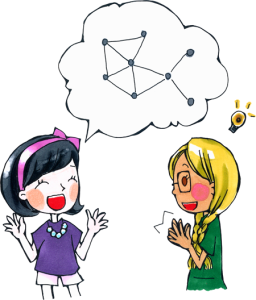My research strives to explain the social human and does so with new, creative, unorthodox methods. The actual research questions are as broad as possible—from close to philosophical questions of what it means to be a human to concrete and practical issues like how to regulate social media.
Computational social science
It’s a trend that has been with us for a few decades now—people, companies, and institutions drop more and more digital breadcrumbs from the great dinner table of society (hmm, did that analogy fly?). These crumbs carry information about everything from individuals’ physical health to global politics. These new forms of data are natural resources of the information economy, but they are also transforming the social sciences.
Computational social science (CSS) is the academic side of this trend. Educating the workforce of the social data industry and informing traditional social science of results unattainable with their methods are the two core components of CSS. But wait, there’s more! (As the daytime TV commercials used to say back in the day.) Precisely because traditional social science is rather conservative, CSS (at its best) has become a methods lab and a meeting place for these disciplines. For us who love to see things from different perspectives, there is no better place to be. Finally, add to that the advancements of AI that promise to fulfill the 60-year-old dream of performing experiments with humans not otherwise possible.
Network science

Networks are all around us: from power grids to the money flow behind anti-climate action, from the nervous system to the logistics of the Roman empire, from legal cross-references to the grammatical structure of birdsong. Networks (or rather, their mathematical abstraction—graphs) are the most versatile framework to describe the way systems are organized and structured and, thus, how they function as wholes.
Network science develops methods to connect the structure and function of networks. It is a multidisciplinary endeavor with its deepest roots in the New York psychology scene of the Depression era. Nowadays, AI, with topics like graph learning, leads much of the agenda in network science, but fundamentally, the task is the same: decoding the information hidden in the systems’ interaction patterns to discover knowledge and improve the world.
Complex systems
 Complex systems research, a.k.a. complexity science, rests on one of the most radical scientific insights ever: If we want science to fulfill its promise of a complete understanding of how the world works, we cannot only rely on the reductionist methodology of explaining phenomena by isolating simple causes and effects—We cannot keep zooming in on individual causal relations like: A virus entering your body can start proliferating; which causes you to feel sick; which triggers an immune response; which makes you better again. We must also zoom out.
Complex systems research, a.k.a. complexity science, rests on one of the most radical scientific insights ever: If we want science to fulfill its promise of a complete understanding of how the world works, we cannot only rely on the reductionist methodology of explaining phenomena by isolating simple causes and effects—We cannot keep zooming in on individual causal relations like: A virus entering your body can start proliferating; which causes you to feel sick; which triggers an immune response; which makes you better again. We must also zoom out.
The complexity science approach is to take a crude look at the whole (in the words of Nobel prize laureate Murray Gell-Mann)—a picture that allows us to understand systems, not in terms of how their components work, but how their components make up a whole.
It gives us hope for scientific answers to bolder questions: Are there hidden laws of how humans organize socially? Could humans and artificial intelligence thrive in symbiosis? How will global warming change our society, and what can we do to avoid the worst scenarios?
Finally
Even better than considering the above separately, I like to see them merged. Could we use AI-mediated network science to elucidate the complex structure of social data? Etc. (The background figure is from CA Doxiadis’ Architecture in Transition showing the calcium carbonate concretions that inspired his urban plans, thus illustrating inspiration and ideas crossing borders.)